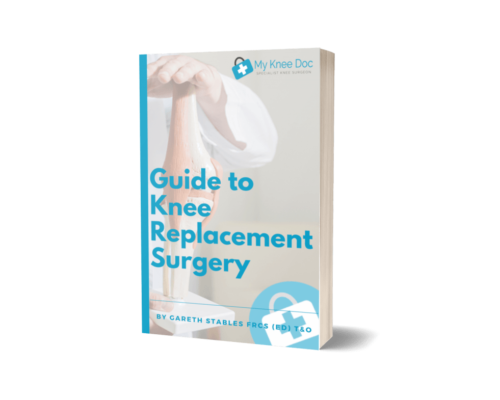Understanding Knee Replacement Surgery
We understand that preparing for knee replacement surgery can be worrying for many people. However, you should be reassured that knee replacement surgery is generally considered to be a safe, and nowadays, a routine operation. Every year in the UK over 80,000 people undergo knee replacement surgery. The main reason is that a successful knee replacement helps get rid of knee pain and discomfort and improves your quality of life.
In this post, we'll go through the entire procedure of total knee replacement, in order to give you a better understanding of what happens during the surgery. By the end of this blog post, you’ll hopefully have a clearer understanding of what knee replacement surgery entails and a better idea if total knee replacement surgery is right for you.
Before the Procedure
In the weeks leading up to your total knee replacement surgery, it’s essential to prepare yourself and your knee joint and leg muscles for the upcoming operation and subsequent rehabilitation. Your knee surgeon might refer you to a physiotherapist before your surgery, and it’s highly recommended you make the most of this opportunity to get a better understanding of what exercises you'll be asked to do after your surgery to speed up your recovery, perhaps practicing these beforehand will give you the extra confidence you'll need to get moving again after your surgery.
Your physiotherapist and knee surgeon may advise low-impact exercises like walking and swimming that will help strengthen your leg muscles and also help you keep generally fit as this has been shown to reduce the complication rate following major surgery.
The procedure explained
When starting your total knee replacement procedure, your surgeon makes a vertical incision down the front of your knee to gain access to your joint. This incision is typically around 15 to 20 cm long in total knee replacement surgery while it can be slightly smaller in minimally invasive knee surgeries.
Preparing and Implanting the Femoral Component
From here, your surgeon will measure your bones, and take a look at the damaged bone and cartilage surfaces around the femur (thigh bone) and tibia (shin bone). At this point, your surgeon will remove any damaged bone or cartilage, before resurfacing the end of your femur and tibia with the metal components of your total knee replacement.
Your surgeon then checks the alignment of your leg and makes sure your new knee fits perfectly and moves freely before getting ready to finally fit your new knee.
Your surgeon then attaches the femoral metal component onto the end of your femur, using bone cement to seal it into its place, the tibial component is fitted onto the tibia and secured using bone cement. With these in place, an additional hard-wearing plastic insert is snapped in place between the tibial surface and femoral component.
Finishing Your Knee Replacement Surgery
As the surgery comes to a close, your patella (knee-cap)is reshaped to fit your new joint. After this, the patella is returned to its normal position so that your surgeon can test that the joint is working correctly. Your wound is closed and dressings are applied, before you are taken out of the operating theatre and back to the ward to begin your recovery.
If you need a bit more information about total knee replacement surgery then you can call My Knee Doc on 0161 464 6399 . If you have any questions or want to book an appointment.


